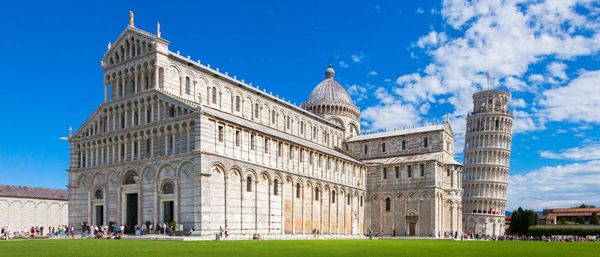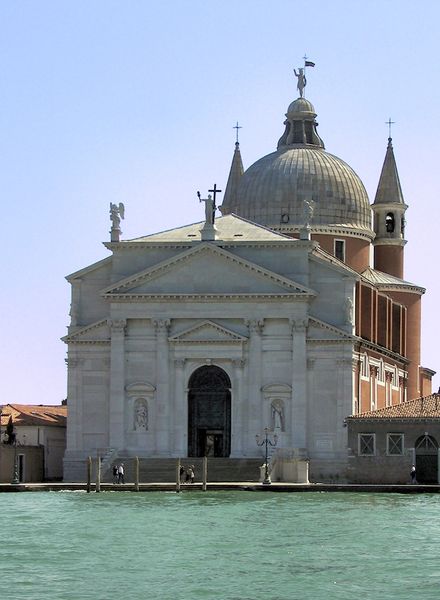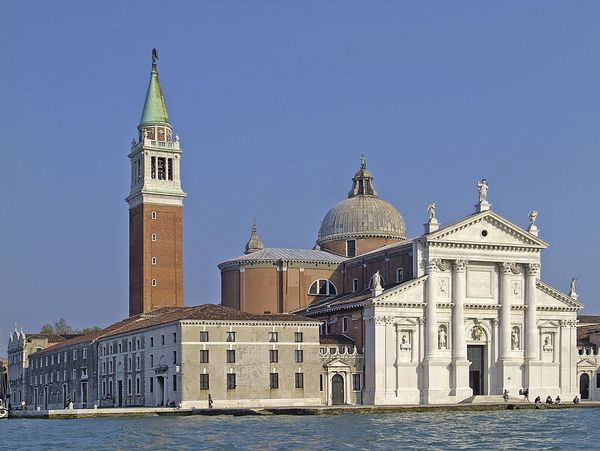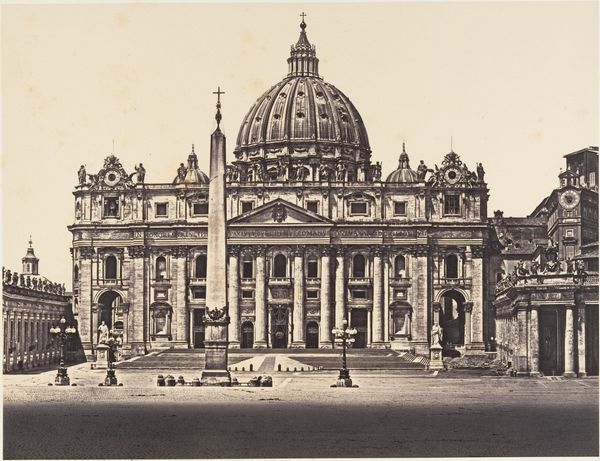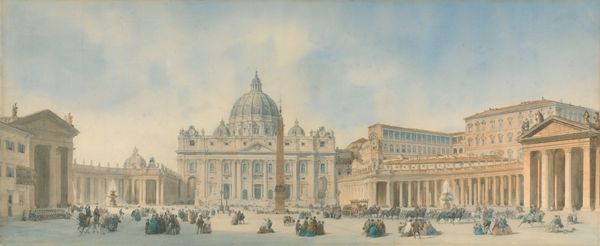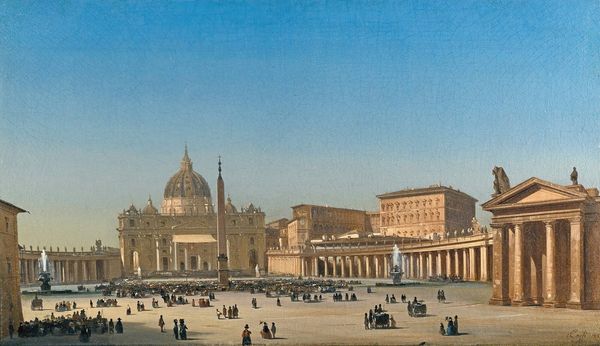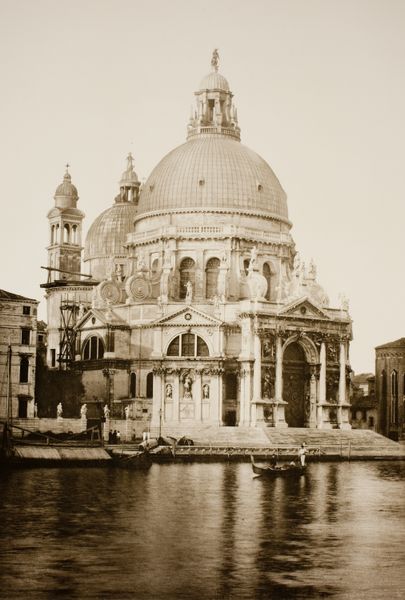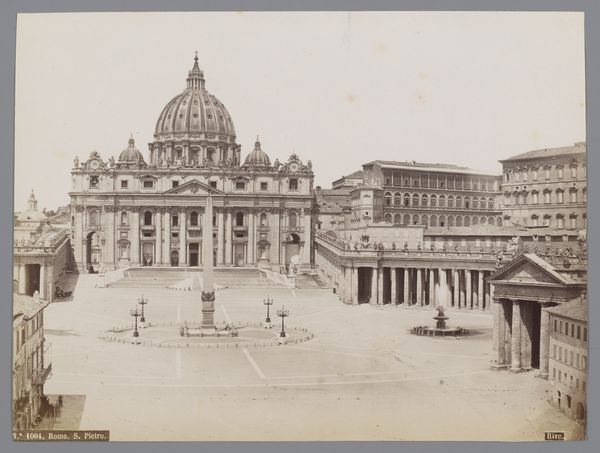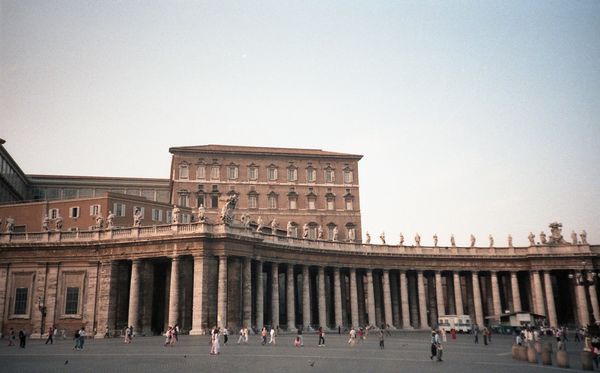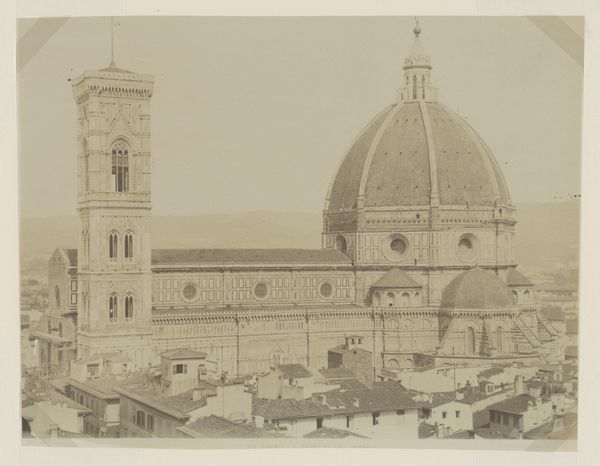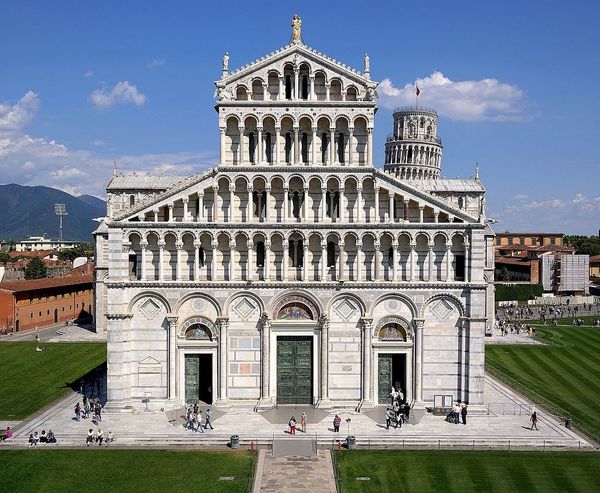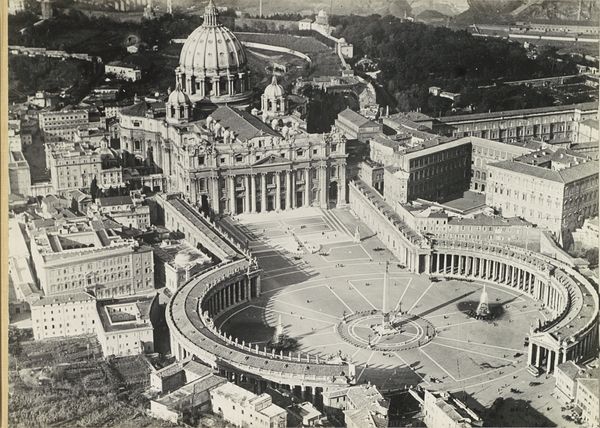
architecture
#
byzantine-art
#
high-renaissance
#
landscape
#
holy-places
#
urban cityscape
#
historic architecture
#
geometric
#
classicism
#
arch
#
street photography
#
cityscape
#
urban photography
#
city photography
#
architecture
#
historical building
Copyright: Public domain
What do Donato Bramante, Raphael, Michelangelo, and Gian Lorenzo Bernini have in common? All of these Renaissance artists were involved in the design and construction of St. Peter’s Basilica, a vast Catholic church in the Roman Vatican City. ⛪️ In 1505, Pope Julius II launched an exciting competition. He challenged Italian architects to invent a design for a basilica (a rectangular Catholic church with important status) to replace the original church on the site of the burial of St Peter. By demolishing the original basilica, which had been constructed in the fourth century and was then in a state of disrepair, Julius II made clear his ambitions for the future of Catholicism. ✝️ The commission was won by the celebrated architect Donato Bramante, who had successfully worked on several churches in Milan. Yet by the time of Bramante’s death in 1514, the Renaissance centrepiece remained unfinished. In fact, St Peter’s Basilica would not be completed until 1626 – over a century later! 🕰️ During the construction of the building, which was subsequently managed by various artists including Raphael and Michelangelo, each architect infused the project with their own individual style. Michelangelo, for example, was responsible for the grand central dome which crowns the church. The dome dominates the surrounding skyline and acts as an impressive symbol of status. 👑 By the time of its completion, the appearance of St. Peter’s Basilica was significantly different to that which had been imagined by Bramante. The building aligns to the shape of a crucifix, with a long central nave flanked by side chapels. With its two-storeyed columns and huge statues of the apostles, the Basilica stands even today as a masterpiece of Renaissance architecture. What do you think? Does the Basilica deserve its status as a Renaissance icon? 👇🏛️ Editor: Lucy Jude Grantham
Comments
No comments
Be the first to comment and join the conversation on the ultimate creative platform.
